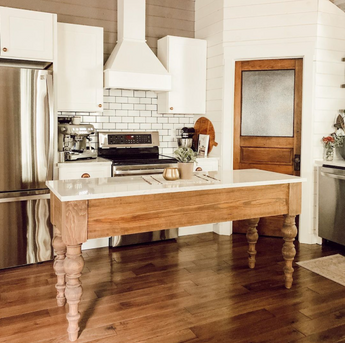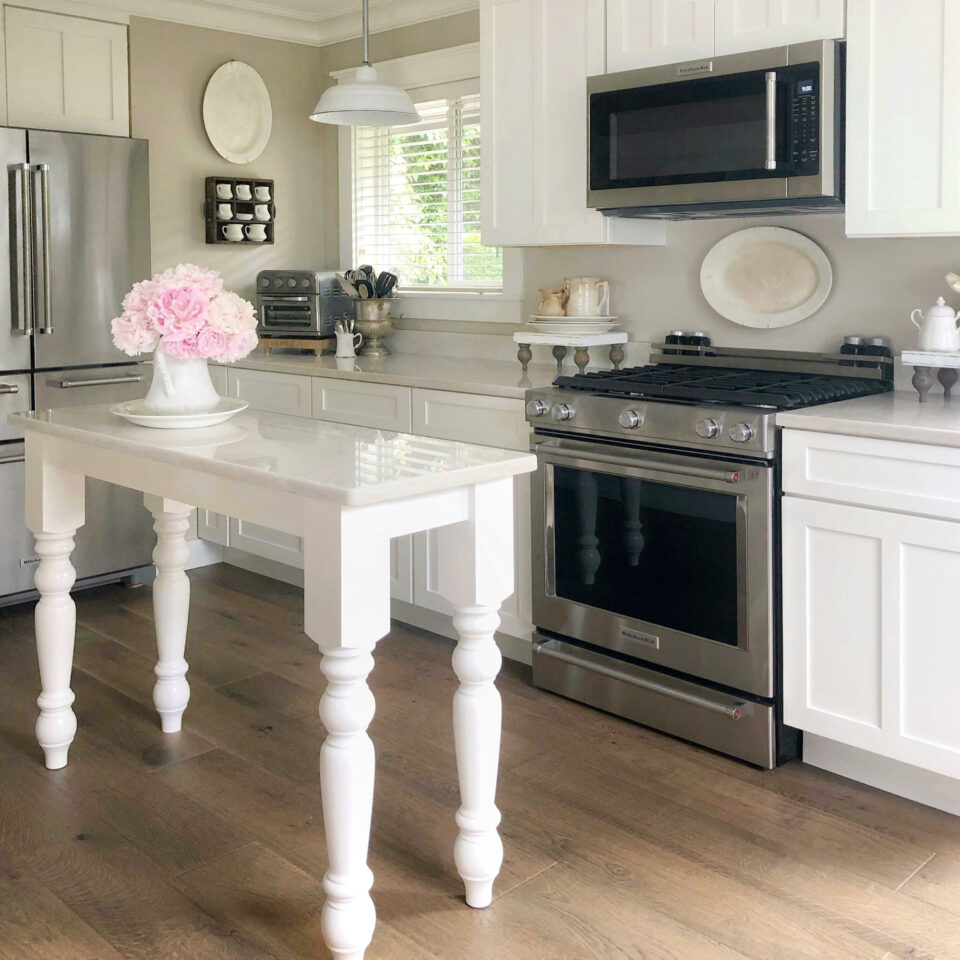The Most Effective Kitchen Island Leg Options for Modern and Typical Kitchens
The Value of a Sturdy Kitchen Island Leg in Creating a Practical Food Preparation Location
A sturdy kitchen area island leg offers as a basic component in establishing a practical food preparation setting, giving necessary support for both the counter top and numerous cooking area activities. The stability it uses can dramatically reduce the risk of mishaps in high-traffic areas, while additionally adding to the total visual comprehensibility of the space. As kitchens develop into multifunctional areas for cooking, dining, and interacting socially, the option of products and style factors to consider for island legs comes to be significantly essential. Recognizing these components can change your kitchen right into a more secure and more efficient location, motivating further exploration right into the very best options offered.
Benefits of Sturdy Island Legs
Providing important assistance, strong kitchen area island legs play a pivotal duty in boosting the capability and longevity of kitchen area islands - kitchen island leg. These legs not only birth the weight of the countertop and any kind of extra things positioned on the island, but likewise add to the total stability of the framework. A well-supported kitchen area island ensures that it continues to be functional and upright, also under heavy usage, which is specifically essential in busy kitchen environments
In addition, tough island legs can improve the visual charm of the kitchen area. They supply a solid structure that can complement various layout styles, from contemporary to standard. This convenience allows homeowners to tailor their kitchen islands according to personal taste while making certain that the structural honesty stays uncompromised.
Along with their supportive function, robust cooking area island legs can likewise improve safety and security. A secure island minimizes the danger of mishaps brought on by tipping or wobbling, which is particularly vital in families with children or senior individuals. Solid legs can facilitate a smooth circulation of activities, permitting for efficient dish preparation and social communications within the cooking area area. Eventually, investing in durable cooking area island legs is important for a useful and visually pleasing cooking area.
Products for Kitchen Area Island Legs
When choosing materials for kitchen island legs, durability and visual allure are essential variables to take into consideration,. One of the most typical materials include hardwood, steel, and crafted timber, each offering one-of-a-kind advantages.
Hardwood, such as maple, oak, or cherry, is a traditional selection due to its strength and ageless appeal (kitchen island leg). It can hold up against significant weight and is resistant to wear, making it ideal for high-use kitchen area environments. Additionally, wood can be discolored or painted to enhance different cooking area styles
Steel legs, commonly crafted from stainless steel or wrought iron, provide a industrial and contemporary appearance. They are exceptionally strong and can sustain significant loads while being resistant to moisture and warmth, which is beneficial in a cooking area. Steel legs can also be conveniently cleaned, boosting their practicality.

Layout Considerations for Stability
The option of materials for cooking area island legs straight influences the layout factors to consider for security. When designing a cooking area island, it is vital to assess the weight-bearing ability of the selected products. Much heavier products, such as solid timber or metal, commonly supply greater security, especially under the anxiety of daily usage.
Additionally, the leg layout should include appropriate geometry to boost stability. A bigger base boosts the assistance location, Full Article decreasing the threat of tipping or tottering. Consideration should additionally be offered to the height of the legs; disproportionate leg sizes can result in inequality, compromising the general stability of the island.
Additionally, the circulation of weight across the island is important. Ensuring that the leg placement lines up with the heaviest components, such as appliances and counter tops, will certainly further improve security.
Maintenance Tips for Durability

Depending on the product of the legs-- whether timber, metal, or composite-- suitable cleaning techniques need to be used. Metal legs may require a light polish to protect against corrosion and maintain their luster.
If the kitchen area island experiences heavy use, take into consideration enhancing the legs with extra brackets or sustains to boost resilience. By complying with these maintenance suggestions, property owners can ensure their kitchen island legs stay robust and functional for years to come.
Choosing the Right Leg Design
Normal maintenance makes certain that kitchen area island legs continue to be practical and tough, but selecting the right leg style is equally essential for both appearances and assistance. The selection of leg design can significantly influence the general style and harmony of your kitchen area.

Functionality is one more critical element. For example, thicker legs or those with a durable base can support larger counter tops and equipment, improving the island's energy. Conversely, slender legs may produce a ventilated look, ideal for lighter layouts yet this content possibly much less encouraging.
Conclusion
In summary, the significance of durable kitchen area island legs can not be overemphasized in the production of a useful food preparation area. These legs provide important support, enhance stability, and add to the overall aesthetic of the kitchen. By very carefully choosing proper products and styles, as well as executing appropriate maintenance practices, the durability and efficiency of kitchen islands can be guaranteed. Ultimately, investing in durable island legs is basic to attaining a effective and safe culinary atmosphere.
A strong cooking area island leg offers as a basic component in establishing a functional cooking environment, providing necessary assistance for both the countertop and various kitchen area tasks.Offering vital assistance, strong kitchen island legs play a crucial role in improving the capability and toughness of kitchen islands. Inevitably, investing in strong kitchen island legs is necessary for a functional and visually pleasing cooking location.
Consideration needs to also be offered to the height of the legs; out of proportion leg lengths can lead to inequality, jeopardizing the general stability of the island.
Wood legs give heat and a traditional look, while metal legs use a industrial and modern feeling.